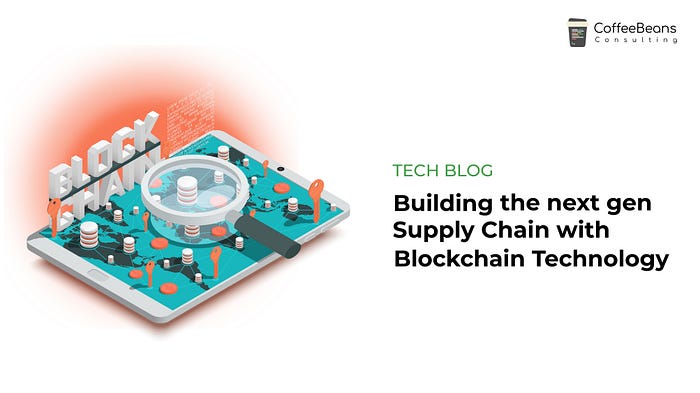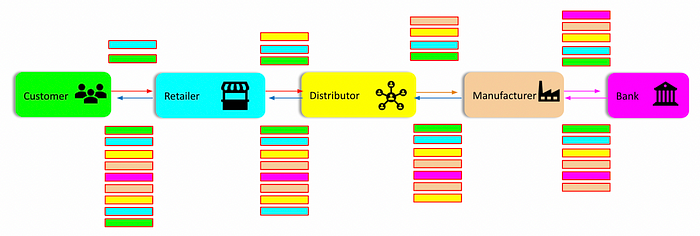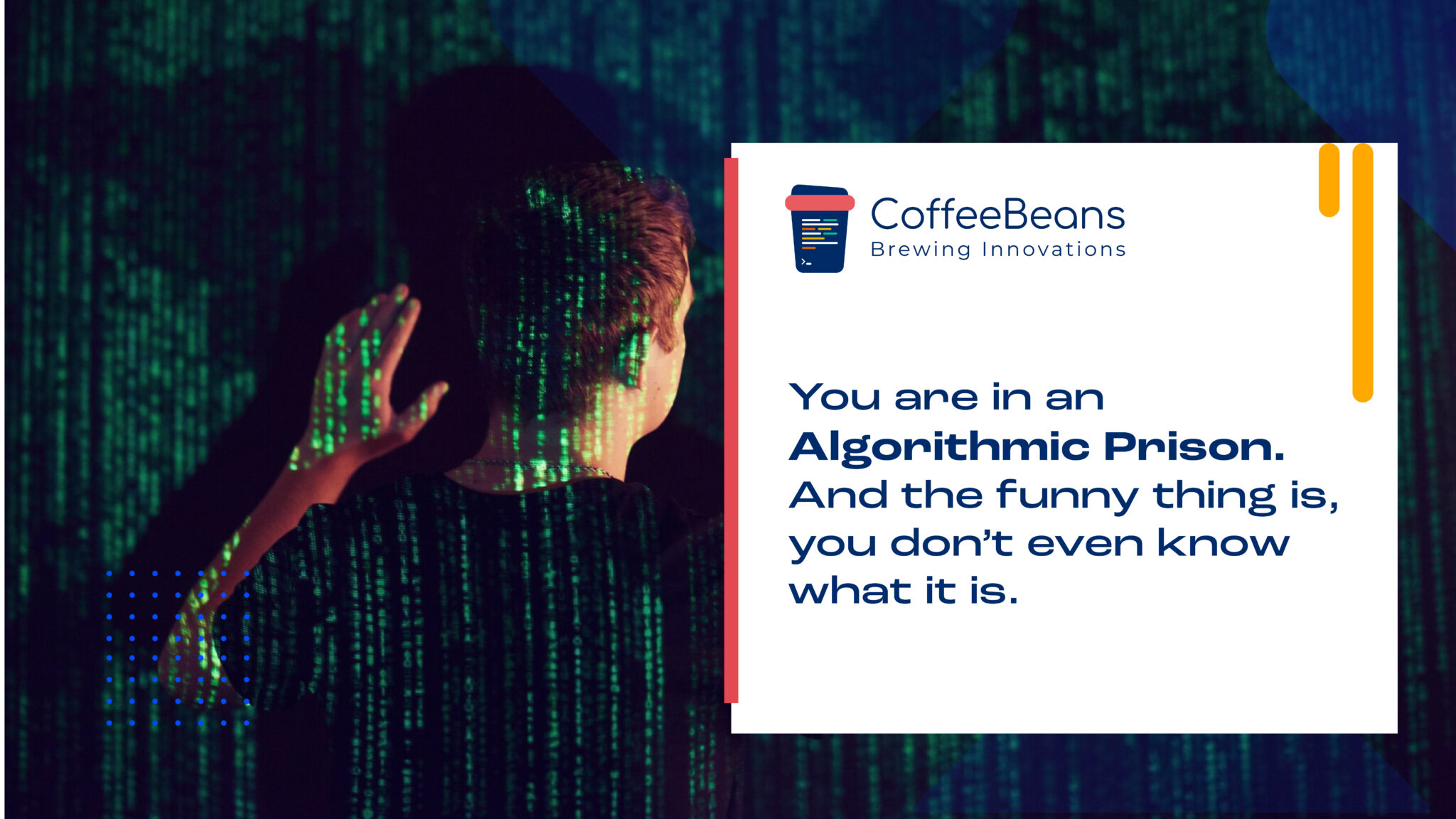Building the next-gen Supply Chain with Blockchain Technology

August 22, 2023
From sourcing raw materials from every corner of the world and selling end products across the world, Supply chain management plays a vital role! And technology never failed to do its job! Blockchain has already disrupted the finance industry and the supply chain will be the next
- By Siva Seetharaman, CoffeeBeans Consulting

Supply Chain Management is becoming one of the most critical areas for businesses to thrive. Manufacturing companies source raw materials from every corner of the world and finished goods are also moved across borders. As the quantum of imports/exports increases, there is a risk that SCM might become a bottleneck especially if there is a lack of planning.
Technology has indeed played a crucial role in transforming this age-old sector of movement of goods. Large enterprises are deploying sophisticated Enterprise Resource Planning systems, and Transport Management Systems to manage their day-to-day operations. But still the current processes and the systems do have their own deficiencies. These deficiencies reduce the credibility of the whole SCM infrastructure.
Challenges in current Supply Chain Infrastructure:
- As goods get transported from one corner to another corner of the world, one shipment is handled by multiple stakeholders until it reaches the customer. Practically, there cannot be one single ERP that is implemented by all the players in the chain.
- The lack of one system results in lack of transparency in the flow of Inventory and Information among the participants. The participants operate in silos and parties like banks and end customers are also often kept in the dark.
- As the Supply Chains involve a lot of cross-border transactions, the possibility of mixing counterfeit products into the chain is very much possible and current systems are not sophisticated to identify this and trace it back to the source.
- There are a lot of manual data entries and paperwork to be done in the current setup. This compounds missing information, and erroneous transactions resulting in reputational and monetary losses in many cases.
Blockchain Technology:
Blockchain Technology is now the buzzword in the world of technology. Blockchain has already made a huge impact in the finance industry. Although there are proponents and opponents to Bitcoins and other currency tokens, the idea of blockchain that makes this happen is indeed foolproof and niche. Following the Finance sector, other sectors have started to explore possibilities to find answers to their problems from Blockchain.
What is Blockchain?
Blockchain is a decentralized digital ledger system that has the capability to receive and record transactions from multiple parties involved in the system. In a traditional database, data is stored in the form of tables. But in a blockchain, the data is grouped and stored as blocks which are in turn connected to existing blocks thus forming a blockchain. A block is the storage unit in the blockchain where transaction information is stored. Along with transaction information, other details like an encrypted number from the previous block, block header, etc. are also stored. Building the blocks involves multiple people vouching for the credibility of the transactions that happen between two parties. Only after transactions are validated, a block will get added to the existing blockchain. It is nearly impossible as of now to change or delete data that goes into the blockchain. The unique feature of blockchain when compared to the traditional database systems is that the data that enter the blockchain are tamper-proof and are recorded forever.
How can Blockchain disrupt the Supply Chain Industry?
As mentioned earlier, blocks are the basics of a Blockchain. Out of the many advantages of this system, three points stand out clearly as game-changers when it comes to implementation in Supply Chain Management. They are Improved Traceability, Minimized human intervention, and Enhanced coordination between the parties. Before getting into the advantages of a Blockchain system in Supply Chain, it is important to understand how to build a blockchain system in a supply chain scenario.
A Classic Supply Chain scenario:
.png)
In the above scenario,
- A customer places an order with a retailer
- To fulfill the requirement, the retailer in turn orders to the distributor
- The distributor then places the order to a manufacturer to produce the product
- Once the manufacturing is done, the manufacturer fulfills the distributor. The distributor fulfills the retailer
- As a final step, the retailer fulfills the customer order.
- The retailer or distributor or manufacturer might seek the support of a bank for financial aid.
As mentioned above, blockchains can improve the credibility of the system by improving the transparency of flow of information and the traceability of inventory between the parties. But why should a system be transparent? Let’s read the cases below to understand why.
Case 1: Banks should make informed decisions before approving a loan or any other transactions. Let’s assume a case where the manufacturer applies for a loan in the bank. In this case, the bank will have to conduct physical audits of the transactions and documentation before approval. This is a long and error-prone process. In a best-case scenario, if the bank can access all the upstream transactions along with agreements in one place, then it will be easy and foolproof for the bank to approve such requests.
Case 2: Let’s assume the distributor imports finished goods from a manufacturer who is in a different country. At the time of receiving at the port, some counterfeit goods are mixed in the supply chain. When the distributor finds this, he will not be able to figure out who mixed counterfeit into the chain. The recall and reverse logistics will then stand out as new problem statements. To address this problem, the distributor should be part of a system where every single transaction with every single participant is recorded in a single system.
A Blockchain Supply Chain system:

For a blockchain system to work as expected, all the parties who are participating in the supply chain should agree to be part of the blockchain. In this case, the assumption is all the parties mentioned in the above diagram are part of the same blockchain. (Reference https://hbr.org/2020/05/building-a-transparent-supply-chain )
- The colored bars mentioned in this diagram are the blocks that get created whenever a transaction is done between two participants.
- In the first step, the customer orders a product from the retailer and the retailer gives back an order confirmation. These are two separate transactions. So two separate blocks are created. The green block is the customer side and the blue block is the retailer side transaction.
- As the flow moves forward, the blocks keep added to the blockchain. So from customer ordering to customer fulfillment, all the blocks are part of this blockchain and anyone participating in this chain will gain the full visibility of the same.
- These blocks now form the blockchain. Every transaction is recorded and every participant of the chain can now access the data. This makes the system completely foolproof and also establishes the ultimate transparency.
Now that we know how a blockchain system works in a Supply Chain scenario, below are the key aspects of the technology that will transform the sector.
Improved Traceability: Every step of the flow is entrusted and recorded as blocks. This makes it easier for the parties to trace back shipments to the source. This is highly useful in sectors like farming, and fishing where multiple unknown parties are involved at source. Also, in sectors like Pharma, Art, it is possible to trace back and figure out the exact point when and where a counterfeit came into the supply chain.
Minimized human intervention: Airway bills, Invoices, Handling instructions, Bill of Landing, Export License, and Packing list are some of the many documents that are involved in a supply chain. The worrying part is that the maker checker process in documentation is purely manual and it is prone to errors. With Smart Contracts in Blockchain, the complete industry can go paperless and improve the efficiency multifold.
Enhanced coordination between the parties: If all the parties agree to get on a blockchain, then there will be a seamless flow of information to all the participants. This improves the coordination between the parties in the supply chain and the overall visibility of information and inventory flows.
Conclusion:
The implementation of Blockchain in Supply Chain Management has been tested in the real world by a few companies like Walmart Canada, IBM Food Trust. But these are tested on a small scale and the world is yet to see a full-fledged implementation where Blockchain replaces ERP.
Transparency of information flow between parties, Reduction of IT costs, Elimination of manual efforts, and Reduction of losses incurred due to counterfeit products are some of the key advantages of Blockchain technology over traditional technology. There are different ways of implementing a blockchain network. The network can be either public or private. Also, there are various other value adds like smart contracts which reduce the efforts needed for mundane activities in SCM like contract management. Of course, there are course corrections to be done and blockchain is an evolving technology. But it gives a promising ray of hope in the world of Trade, Commerce, and Supply Chain Management.
References:
- https://hbr.org/2020/05/building-a-transparent-supply-chain
- https://www.ibm.com/blockchain/supply-chain
- https://www.mckinsey.com/business-functions/operations/our-insights/blockchain-technology-for-supply-chainsa-must-or-a-maybe
- https://www2.deloitte.com/us/en/pages/operations/articles/blockchain-supply-chain-innovation.html
Thanks for reading!

